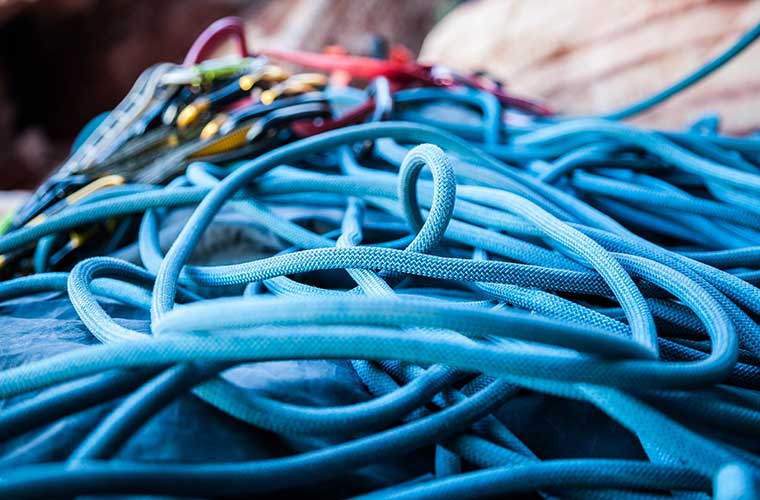Types of bungee cords

Although bungee jumping does not require very extensive equipment, it is really essential, in addition to having the necessary experience and knowledge, to have a high quality rope adapted to the practice of bungee jumping. A pair of ropes will be used, one for each participant and another safety rope in case one fails. The area to which the rope is attached will depend on the type of jump to be made, with the feet being especially suitable for front jumps and the chest support being suitable for back jumps.
There are three types of rope: static, semi-static and dynamic.
- The static ropes are made of polyamide and, as their name suggests, are not elastic at all, so they completely avoid the yo-yo effect. They are used to make jumps with an oscillatory movement as if it were a pendulum.
- The semi-static ropes are slightly more elastic than the previous ones, with a maximum stretch of 5%. However, it is essential to keep an eye on the height of the fall, as at high speeds this rope could break. They will not absorb the energy completely, so a lot of practice is recommended to avoid accidents.
- The dynamic strings can absorb all the potential energy of a fall, and are made of a very elastic polyamide. It is indispensable if you want to make a vertical and high jump, as it reduces the impact effect thanks to its yo-yo effect. The diameter of the rope can be less than 8 millimetres (which are then considered as auxiliary ropes and are called "cords") or more than 8 millimetres (which would constitute a full-fledged safety rope). You can see the diameter of each rope at one end.
The practice of bungee jumping requires the necessary training, experience and knowledge in the practice and the necessary materials.
READ ALSO:
Don't miss any adventure in the Pyrenees!
